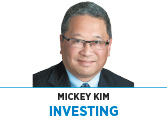Subscriber Benefit
As a subscriber you can listen to articles at work, in the car, or while you work out. Subscribe Now The following is an excerpt from Kirr Marbach & Co.’s fourth-quarter client letter, available at www.kirrmar.com.
The following is an excerpt from Kirr Marbach & Co.’s fourth-quarter client letter, available at www.kirrmar.com.
In 2021, the S&P 500 had its 12th-best annual performance since World War II (posting 70 new all-time highs along the way), but investors should expect more modest returns in 2022. To prevent the total collapse of the U.S. economy at the start of the pandemic, the Federal Reserve slashed short-term interest rates to zero and restarted “quantitative easing,” purchasing $120 billion of U.S. Treasury Bonds and mortgage-backed securities on the open market each month, which kept longer-term interest rates low.
With the economy recovering strongly and inflation remaining stubbornly high (increasing from a benign 1.4% at the start of the year to an alarming 7% in December, the highest reading since 1982), the Fed has clearly signaled its intention to accelerate the scaling back of these emergency relief measures. Historically, higher interest rates have been a headwind for stocks, as there is an inverse relationship between rates and price-to-earnings ratios.
S&P 500 operating earnings surged about 50% in 2021 from pandemic-depressed 2020, driven by higher revenues and record profit margins. This growth is unlikely to repeat in 2022. Still, if the economy continues to recover (COVID is always a wild card), it’s reasonable to expect corporate earnings to grow by high single digits in 2022.
With a high correlation between earnings growth and stock gains, 2022 could be another solid, if unspectacular, year. Indeed, according to investment firm CFRA, price returns following years with 20%-plus gains since 1945 averaged 10.4% and rose 80% of the time, versus the 9.3% average gain and 74% frequency of advance for all years.
Stocks were remarkably calm in 2021, but with the Fed removing emergency stimulus measures, investors should fasten their seatbelts in 2022. Investors experienced extraordinarily low volatility, particularly compared with the gut-wrenching, COVID-induced volatility in 2020. The S&P 500 had only 55 days when the index rose or fell by 1% or more. According to JPMorgan, going back to 1980, the average intra-year drop was 14%, but the maximum drawdown for 2021 occurred from Sept. 2 through Oct. 4 and totaled only 5.2%.
U.S. stocks have stumbled out of the starting gate in 2022, as investors are clearly unnerved by the abrupt change in stance from the Fed. It’s not surprising stocks have sold off in early 2022 after a strong 2021 and that the damage has been greater in the stocks with higher price-to-earnings ratios (think technology) that are more vulnerable to higher interest rates.
Many investors reflexively react to reversals of Fed policy from “accommodative” to “tighter” as a bad harbinger for stocks, but that’s not necessarily the case. While the Fed’s raising rates is a headwind, history shows stock returns remain robust in the months leading up to and following the first increase in rates. According to Credit Suisse, over the past four cycles of the Fed’s raising rates (1994, 1999, 2004 and 2015), the S&P 500 gained 9.5% in the 12 months prior to the initial rate hike and 26% over the subsequent three years. Further, Credit Suisse said, the “real damage from higher rates tends to occur later in the cycle when tighter policy flattens/inverts the [yield] curve [a precursor to recession]. We are far from that point.”
This is the silly season when “experts” make loud predictions for the markets and economy. For long-term investors, we believe it’s much more effective to focus on understanding the business forces that determine the arc of an individual company’s fortunes and to assess how those fortunes could be impacted by a range of macroeconomic developments, rather than guessing the unknowable. We believe companies with strong profitability and earnings, trading at relatively attractive valuations, will do better than high price-to-earnings ratio stocks, particularly if rising rates continue to compress those stocks dramatically at the more expensive end of the spectrum.
That said, if you want to think in terms of market forecasts, long-term investors would be wise to focus on 2032, not 2022. Here’s what to consider:
Since 1926, U.S. stocks have averaged an annual calendar-year return of 10.5%. It might seem reasonable to expect a return of plus or minus 20% around the average (i.e. 8%-12%), but you’d be surprised the actual return was 8% to 12% in only six of the 95 years since 1926.
Similarly, Crandall-Pierce examined rolling one-year returns for the S&P 500 from January 1950 through December 2021 (71 years). The average annual return over that period was 12.8%, and 80% of the one-year periods were positive. However, the range around that 12.8% average was enormous, from -43.3% to 61.2%.
The average historical return for a short period, such as one year, tells you nothing about what the next year will bring.
2032
Conversely, Crandall-Pierce also examined rolling 10-year returns for the S&P 500 over the same period. The average annual return was 10.6%, but returns were positive 97% of the time. In addition, the range around the 10.6% average was much tighter at -3.4% to 19.5%.
Stretching your time horizon from one year to 10 years does wonders for decreasing the volatility and anxiety you’ll experience.•
__________
Kim is Kirr Marbach & Co.’s chief operating officer and chief compliance officer. He can be reached at 812-376-9444 or [email protected].
Please enable JavaScript to view this content.
